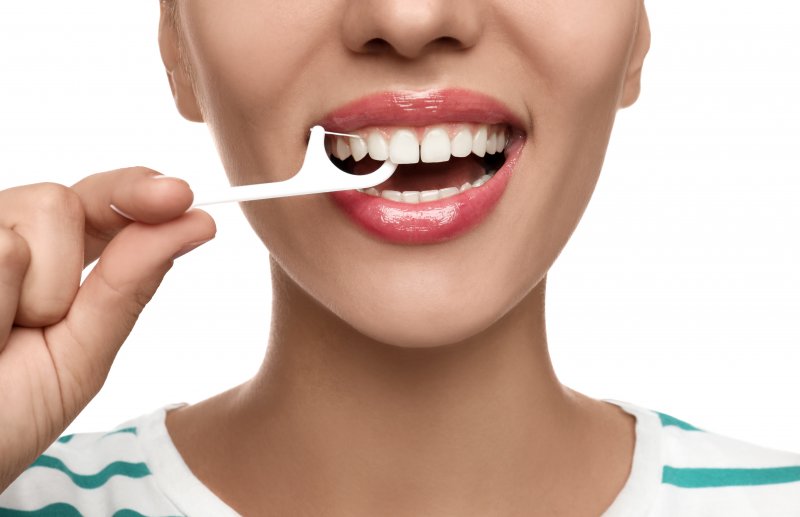6 Ways You Might Be Flossing Incorrectly
June 21, 2022

Other than brushing your teeth, flossing is one of the most important practices for preserving your dental health. Not only does this effectively remove plaque and bacteria, but it can help avoid more serious conditions from developing, such as gum disease. Since this is an essential part of cleaning your teeth, you may be wondering if you’re doing it correctly. Keep reading from your dentist in Oshkosh to learn six ways you might be flossing wrong!
#1: Not Enough Flossing
Having bacteria in your mouth can be harmful in the long run, as they can cause decay and infection that can spread throughout the body. If you eat three meals a day, then you’re constantly adding more debris and bacteria around your smile. By removing these particles more frequently, you can ensure a cleaner and healthier mouth.
#2: Not Flossing at the Right Time
Saliva production is essential for naturally washing away bacteria. However, this flow decreases while you sleep, meaning any food left on your teeth is more likely to promote bacterial growth. While you might consider flossing at the beginning of your day to start fresh, it’s best if you do this before bedtime to allow yourself to sleep with a cleaner smile.
#3: Flossing and Brushing Are in the Wrong Order
Sometimes people brush before they floss. The problem with this is that any food or debris between your teeth will prevent your toothpaste from cleaning the entire exterior of your smile. Instead, you should floss first so that the fluoride can better coat the cleaned surface and maintain the areas between your pearly whites.
#4: Staying Above the Gumline
Not only are you supposed to floss between your teeth, but you’re also meant to reach beneath your gumline. This is the most crucial part of the process, as bacteria can collect below the base of your smile. To effectively avoid gum disease, you’ll need to gently floss up and down your tooth and under the gums to remove any hidden food particles, plaque, and bacteria.
#5: Sawing or Snapping Into Your Gums
Flossing aggressively can cause damage to your gum tissue. This may include sawing the floss instead of moving it up and down the tooth, and snapping it into the gums and causing them to recede. You’ll want to use smooth and gentle movements to clean your smile while keeping the soft tissue safe. And if you have trouble pulling the floss from your teeth, try tugging it toward your cheek for safe measure.
#6: Not Reaching All the Spots
Some people may have crowded teeth in areas that are hard to reach when cleaning. If these places are too difficult for you to floss, then you might want to invest in dental products like a Waterpik water flosser. By using a pressurized stream of water, you’ll be able to reach the areas between your teeth that you can’t access normally!
These are only a few methods that can indicate a need for adjusting your cleaning technique. Feel free to speak with your dentist if you want to learn the proper way to floss, and they’ll be happy to show you the ropes!
About the Author
Dr. Bob Heil earned his dental doctorate from the University of Minnesota. He’s also a member of the American and Wisconsin Dental Associations and regularly pursues advanced training to refine his skills. He offers multiple comprehensive treatments, including dental checkups and cleanings, and can provide pointers on the best practices for maintaining your smile. If you’d like to schedule an appointment, visit his website or call 920-235-0320.
No Comments
No comments yet.
RSS feed for comments on this post.
Sorry, the comment form is closed at this time.
